My weekend plan to Kabini backwaters, Rajiv Gandhi National Park, was all set, to test my newly acquired Canon 400mm f2.8 L IS II lens. I have my Canon 800mm f5.6L IS which I use for Wildlife as well as bird photography. My normal combination is the Canon 800mm with the Canon 1D Mark IV. I now needed a second body for my second lens and the timing was perfect. Canon had launched the Canon 5D Mark III and I had heard & read some good reviews about it, especially its high ISO performance and the superior Auto Focus performance. It was a good time for me to get my hands on it.
Thanks to Canon India for shipping me the body at a short notice. Being a Canon Pro Panelist, it was a privilege to use and review it.
Main attractive features of the Canon 5D Mark III
-
✦Newly designed 22.3 Megapixel full-frame CMOS sensor, 14-bit A/D conversion, wide range ISO setting 100-25600 (L:50, H1: 51200, H2: 102400) for shooting from bright to dim light and next generation DIGIC 5+ Image Processor for enhanced noise reduction and exceptional processing speed.
-
✦New 61-Point High Density Reticular AF including up to 41 cross-type AF points with f/4.0 lens support and 5 dual diagonal AF points (sensitive to f/2.8).
-
✦iFCL Metering with 63 zone dual-layer metering sensor that utilizes AF and color information for optimizing exposure and image quality.
-
✦Outstanding shooting performance: up to 6.0 fps continuous shooting using a UDMA CF card.
-
✦Magnesium-alloy body with shutter durability tested up to 150,000 cycles, enhanced dust-and-weather resistance, and updated EOS Integrated Cleaning system for improved vibration-based dust removal.
-
✦3.2-inch Clear View II LCD monitor, 170° viewing angle, 1,040,000-dot VGA, reflection resistance with multi coating and high-transparency materials for bright and clear viewing.
-
✦High Dynamic Range (HDR) and Multiple Exposure modes expand creative possibilities.
-
✦For the first time in a 5D-Series camera, the EOS 5D Mark III offers a silent, low vibration shooting mode. By slowing down and muting the shutter and mirror reflex action, the camera is capable of handheld, virtually imperceptible operation for discrete shooting in more situations at speeds of up to 3 fps.
The below review and the images are from a production unit of Canon 5D Mark III and Canon EF 400mm f2.8 L IS II Lens. The brief, hands-on field review is more from a Wildlife Photography perspective (many under low light conditions). I have looked at a few of the key features which aid in wildlife photography, mainly the Auto Focus speed and the high ISO performance.
NOTE: The main intent of this two days safari in the south Indian forest of Rajiv Gandhi National Park was not to try and make great images (of course if opportunity permitted, it was on the list) but to test the capabilities of the Canon 5D Mark III from a wildlife photography perspective. Getting great images in Wildlife photography requires a lot of patience and numerous trips in the field along with a good understanding of your subjects. Over the 6 safaris I did, I tried my hand at all the common subjects I could get. Of course the icing on the cake was the two Leopards during our final safari. I kept most of the camera parameters in the company default setting.
Autofocus System + 6.0 fps Shooting (For some action photography)
One of the key elements which makes or breaks the photograph is our ability to pre-visualize the scene and be ready to capture it. Especially in Wildlife Photography, you hardly have a few seconds to predict what happens. Years of field experience and understanding the behavioral aspects of the animals is also an important factor.
Along with our ability to predict, it is also equally important that the camera's predictive auto focus system works as per design and is ready to capture the scene.
The newly designed 61-Point High Density Reticular AF features an Offset Array Sensor (with staggering AF point arrangement) to deliver greater accuracy, regardless of the situation. It offers multi-zone wide-area AF for better tracking, has 5 central dual cross-type points (f/2.8 diagonal), 21 central cross-type points (f/5.6 horizontal & vertical) and 20 outer cross-type points (f/4.0 horizontal), and is sensitive in extremely low-light situations (EV-2 for a central point with a f/2.8 lens).
The EOS 5D Mark III has a dedicated AF menu tab, so AF can be controlled without having to go through custom function menus. It also has 6 AF point selection methods (Spot, Single Point, Single + Adjacent 4 Points, Single + Adjacent 8 Points, Zone Selection, and Automatic AF Point Selection), plus a dedicated AF configuration tool for control of AI Servo AF III tracking parameters (tracking sensitivity, acceleration/deceleration tracking, and AF point auto switching).
The above technology when used in combination with the f2.8 lens gives super clarity and track sharp images - and in low light conditions.
When I entered the forest with the 5D Mark III mounted on the 400mm f2.8 L IS II lens, my goal was clear. To get as many action shots as possible. The very first mammal I came across was a Hanuman Langur. The light was very low with little or no sunlight. I asked our driver to stop the vehicle as it was running towards a tree. I quickly lifted the 400mm f2.8 + 5DM3 combination and aimed at the running Langur. The camera picked up the subject in no time and I was ready to shoot. I could easily capture the Langur jump up the tree and climb. All this happened in a few seconds and I had track sharp images of the entire series. Here are a few frames from that series. Very basic processing of resize and sharpening of amount 60 done in Photoshop. No other correction applied.
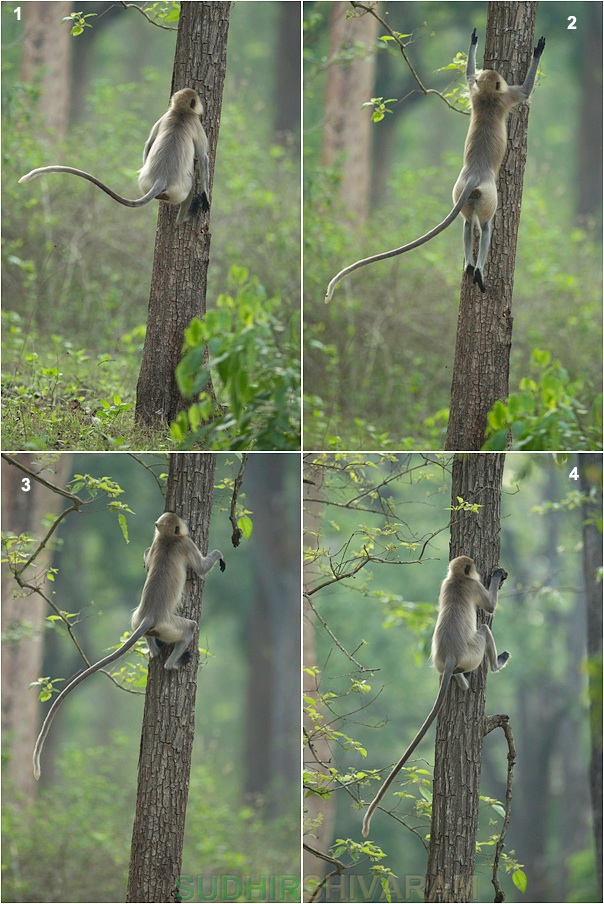
Canon 5D Mark III + Canon 400mm f2.8 L IS II, ISO 2000, f/2.8 @ 1/2500, AI Servo AF
The previous version, i.e. Canon 5D Mark II could shoot at 3 fps but that was not great for action photography. The 6 fps capabilities of the 5DM3 easily make it usable for some decent action photography. Here is a series of images showcasing what can be achieved with the combination of super fast AF system combined with the 6fps shooting speed of the Canon 5D Mark III. The lens also plays a major role in the focusing speed and in this case since I was using the Canon 400mm f2.8 L IS II lens, I was at a great advantage to get good action shots.
The Spotted Deer density at Kabini backwaters is high and these can be seen quite often during the safari. They served as a good testing subject for the camera focusing speed whenever they took to their heels. The timing is quite important here.
Typically we are in the Jeeps and on the move. Photographing from a moving vehicle is tough. We have to wait till the jeep comes to a standstill before we can shoot.
The timing has to be good - where the jeep halts, the driver switches off the engine (remember, photographing from a vehicle with the engine on can lead to shaky images because of the vibrations) and you are ready to shoot. You get a small window of opportunity to compose and execute your shots.
The evening golden light added to the vibrancy of colours.

In this case, the overall ambient light was low but I was able to achieve fast focus and get a sharp action picture. Notice that even at ISO 320 I was able to get a shutter speed of 1/500 which is decent enough to capture slow action.
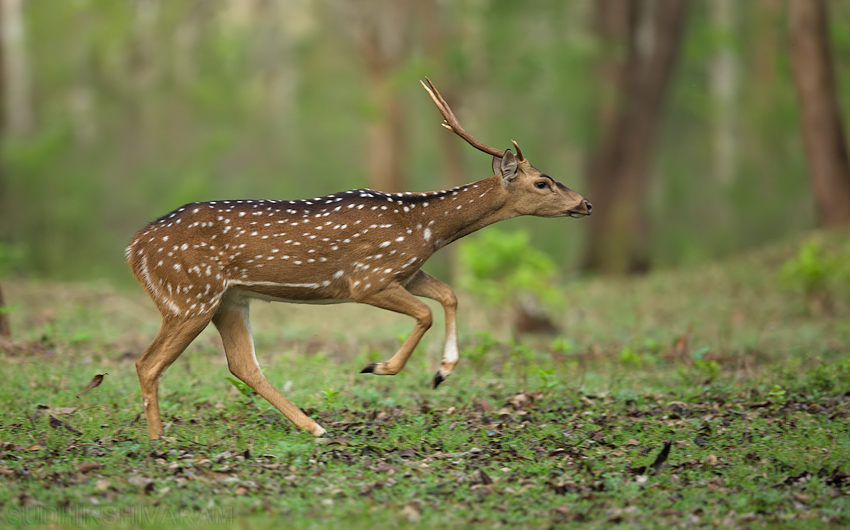
The camera kept track of the subject and never lost focus. The easy hand holding capabilities of Canon 400mm f2.8 L IS II lens made it possible to track the subject.
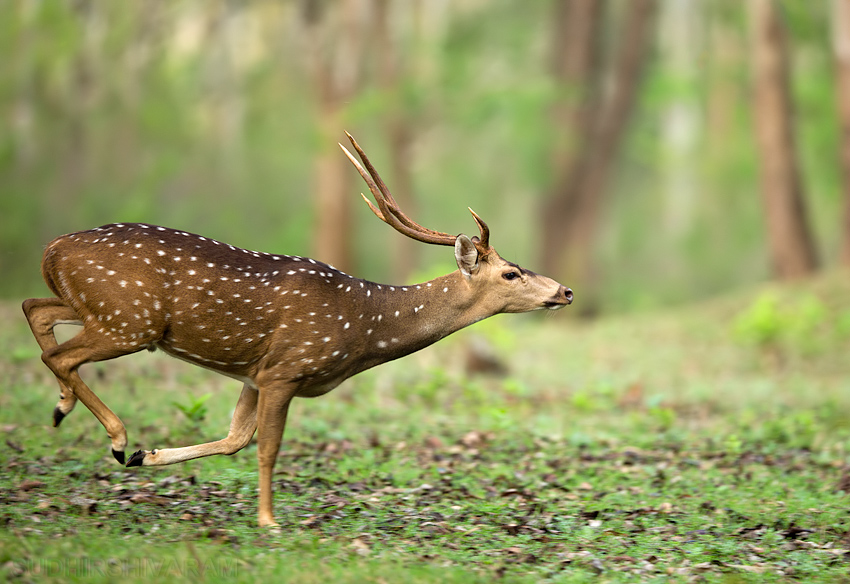
The camera kept track of the subject and never lost focus even though there were distractions in the background. Canon 5D Mark III provides easy access to set your focus tracking through direct menu options. This makes it easy to change your settings fast depending on the kind of action you plan to shoot in a given habitat / environment.
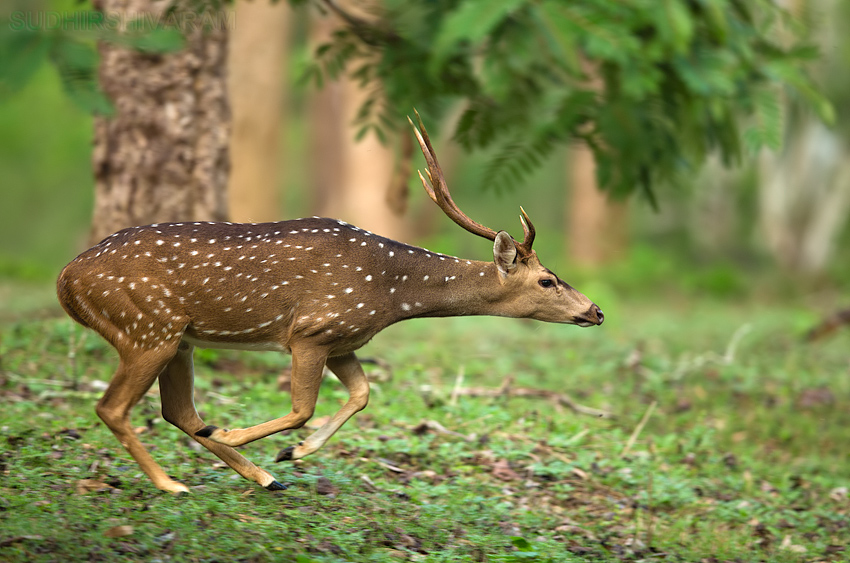
Here is another example of the fast servo mechanism. As we were driving down, we stopped to photograph some Sambars. I noticed this baby Bonnet Macaque playing in a group and running across the branch, and. I quickly lifted the Canon 400mm f2.8 L IS II lens and could get it in focus and get sharp pics.
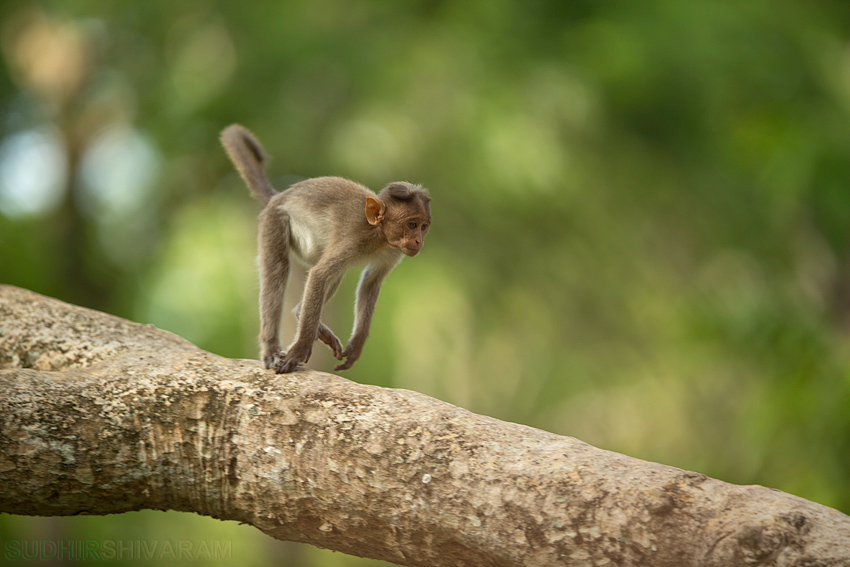
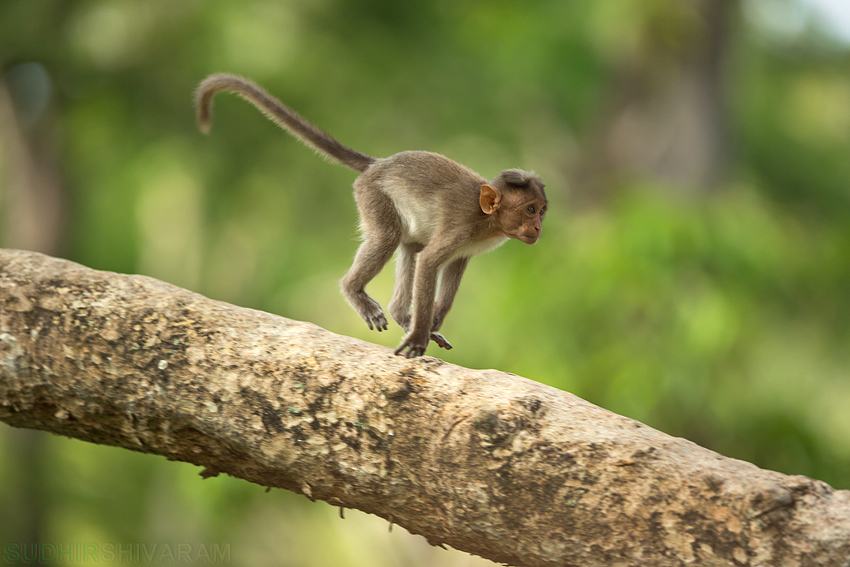
The 6fps speed of Canon 5D Mark III is very decent to capture some basic actions. Here is a series of frames, all photographed at 8:13:56 AM. In that 1 second I was able to capture 5 frames. Of course, I missed the Langur from the frame for the 6th shot. The Langurs in the forest of Kabini in Rajiv Gandhi National Park are a bit shy and take to their heels when they see a vehicle. They are not super fast, but at the same time it is challenging to get them in focus and to capture them in action.
Here is the first frame photographed at 8:13:52 AM. My finger on the shutter release, half pressed to keep it in focus and ready to press fully the moment it moved. I waited for it to jump off the tree to capture the series of it running.
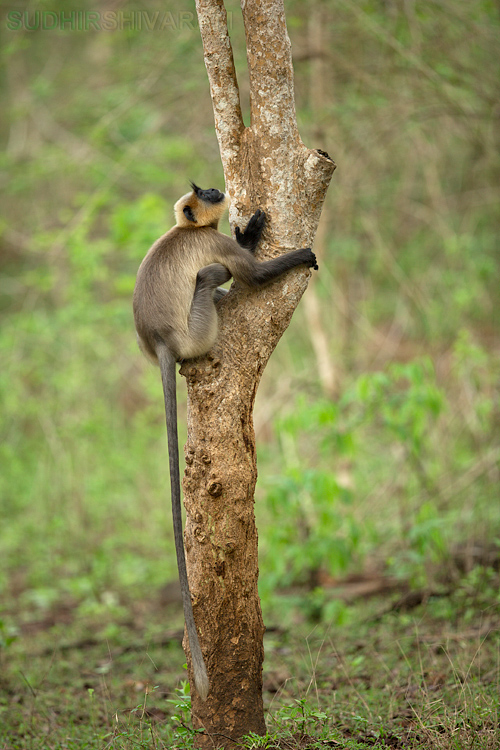
Canon 5D Mark III + Canon 400mm f2.8 L IS II, ISO 200, f2.8 @ 1/500, Evaluative Metering at Zero EV.
The rest of the series below - All photographed at 8:13:56 AM
The moment it was off the tree, I let loose the trigger and shot it continuously.
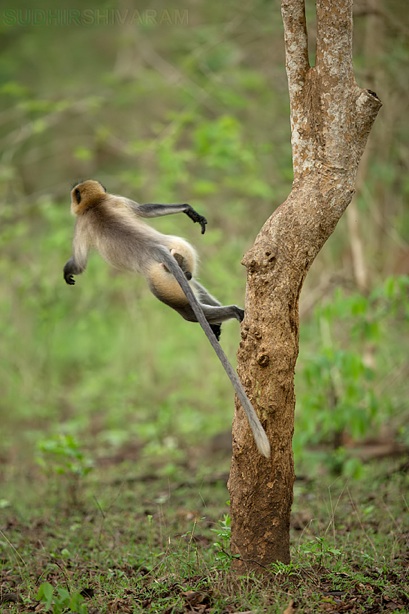
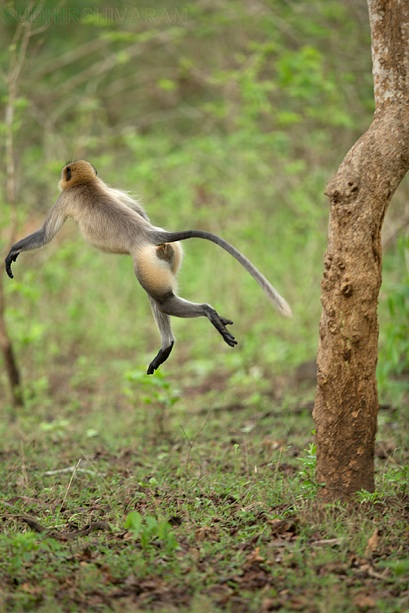

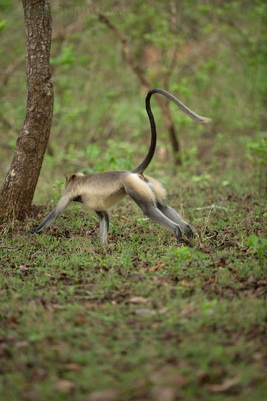
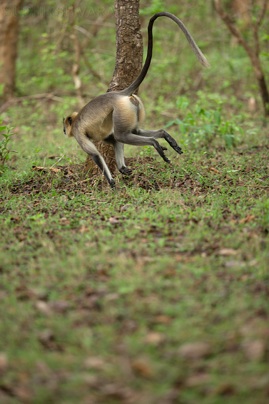
The above series of images should give you a sense on the capabilities of 5D Mark III to capture action in Wildlife Photography. As long as you can predict what may happen next, if you are ready, the Canon 5D Mark III will be ready to focus and shoot even before you. Your focusing skills and shooting techniques to capture action also plays a major role.
Here is another classic example of the speed with which the Canon 5D Mark III can lock focus on a moving/flying subject. As we were driving around, we saw a Crested Serpent Eagle on a tree and before we could halt, it flew off. Fortunately it flew in our direction beside us. And that fraction of a second was enough to lock focus and shoot.
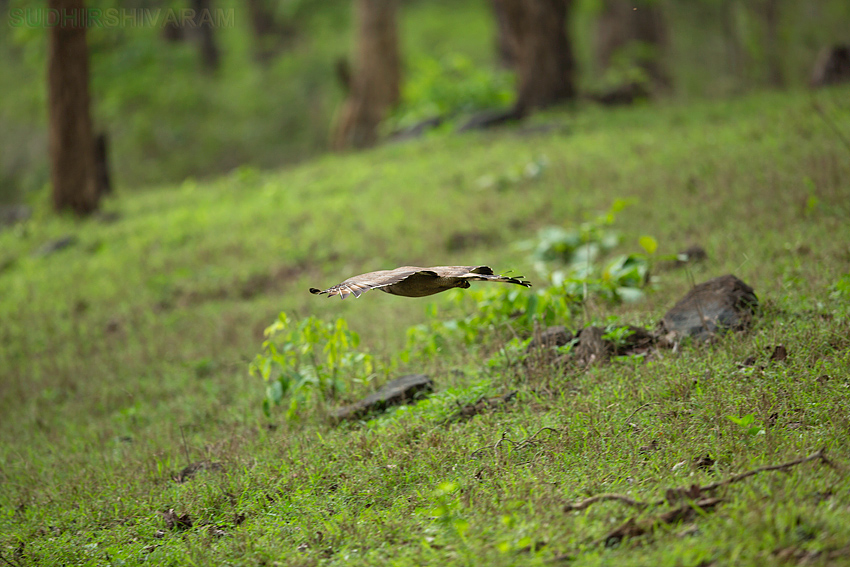
Canon 5D Mark III + Canon 400mm f2.8 L IS II, ISO 200, f2.8 @ 1/1000, Evaluative Metering at Zero EV.
Here's a close crop from the above full frame image to show the sharpness achieved in that small duration of time.
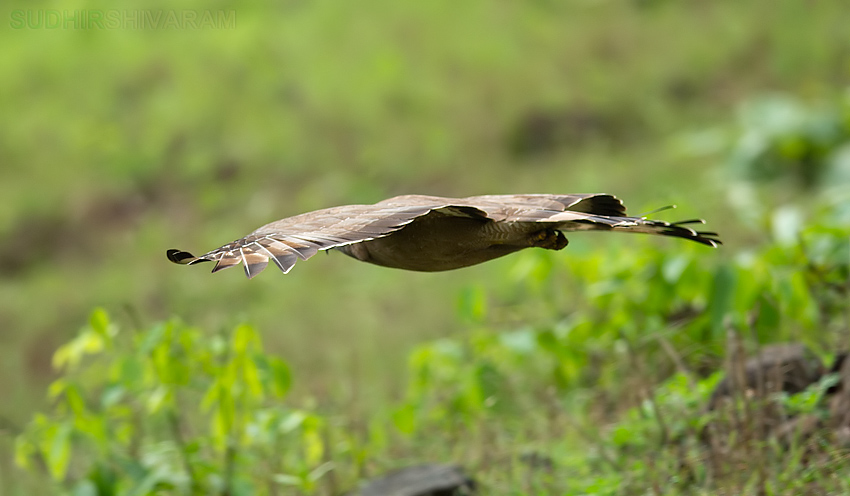
Canon 5D Mark III + Canon 400mm f2.8 L IS II, ISO 200, f2.8 @ 1/1000, Evaluative Metering at Zero EV.
High ISO Performance
The other impressive key feature of the Canon 5D Mark III is its ability to get quality images at high ISO with almost no noise. All these years I was hesitant to increase the ISO beyond 400 or an upper limit of 800. Beyond that the noise issue used to creep in my mind (and the images). I have, at certain times, shot at ISO 3000 to capture the Brown Fish Owl in the late evenings but would do quite a bit of post processing to get a decent image out of it. However, with the 5D Mark III, once I was able to overcome the mind block of bumping up the ISO, it was as cool as a walk in the park. Shooting till ISO 5000 was never an issue. After shooting multiple images at higher ISO during the first safari and reviewing the images in my computer gave me the confidence for the rest of the trip to concentrate more on image making and not worry about noise. ISO 2000 to 3000 was the average ISO I used in low light situation during most of the trip. Combined with the f2.8 aperture lens, I could shoot decent action in low light situation and not worry about noise at all.
To check for the ISO performance, I chose to photograph this cute little girl Kaira whom I met at the Bison resort at Kabini backwaters. She had an amazing smile and was extremely photogenic. I wanted to start with a decent ISO which I was always hesitant to use, ISO 1000.
Note: All images below have been processed in RAW with no noise reduction applied. Resize and basic level corrections done. Also High ISO speed noise reduction in the camera was set to Standard.
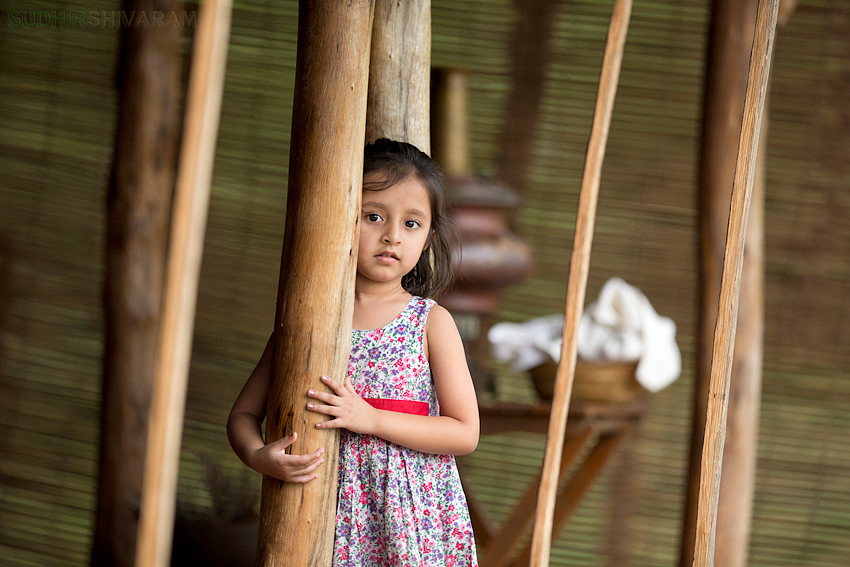

Once I was able to shoot at ISO 1000 with confidence, I then took it up to ISO 5000. What better subjects to get in to forest to experiment than my close friends Giri Cavale and Jayanth Sharma who are the co-founders and directors of Toehold Travel & Photography company; fantastic individuals and great wildlife photographers!
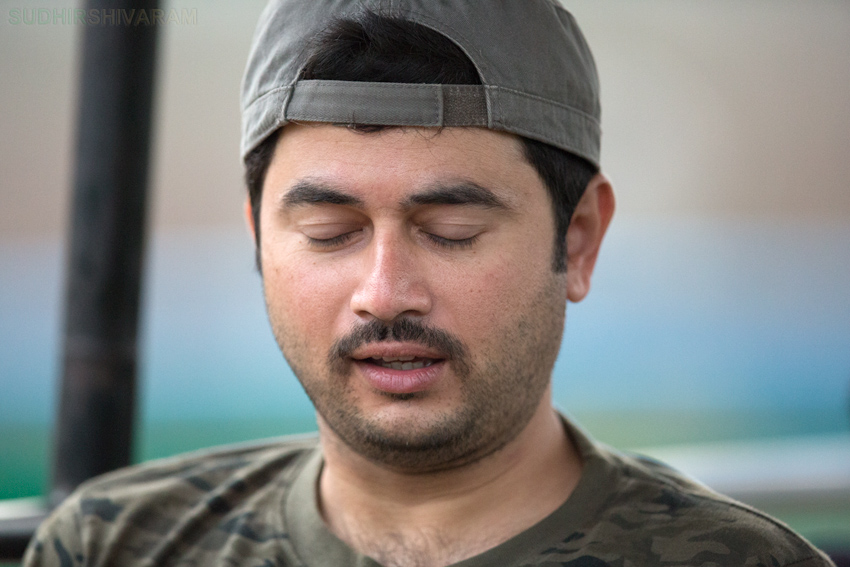

And of course Giri’s wife, Kirti, who was accompanying them.
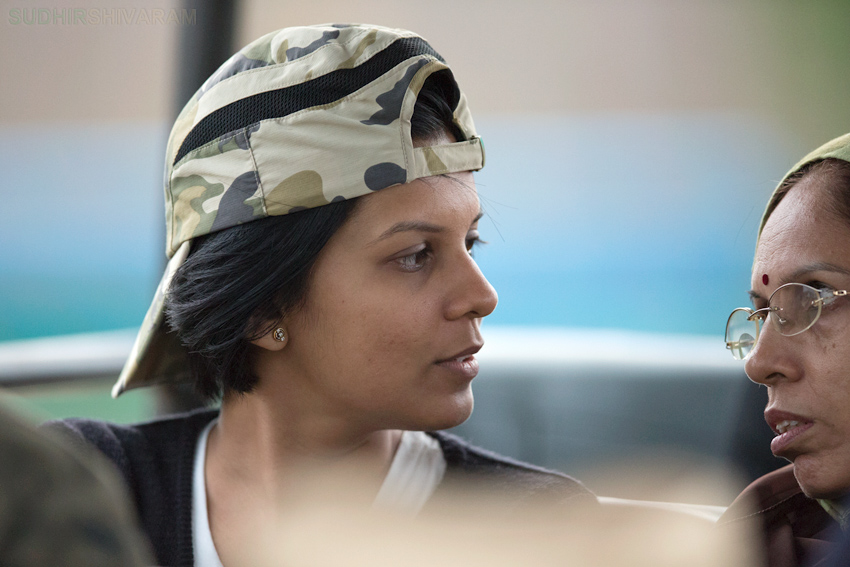
Canon 5D Mark III + Canon 400mm f2.8 L IS II, ISO 5000, f2.8 @ 1/3200, Evaluative Metering at Zero EV. Photo shot at 6:32:44 AM
Once I was back in Bangalore, I wanted to try out event photography, especially in late evenings, and I got that opportunity at Phoenix Mall, Whitefield, Bangalore. One of the challenges of event photography, especially indoors or late evening is that you cannot use flash. You need to work with the available light. And since you do not have the flexibility to place a tripod in the middle of the crowd or just in front of the stage, you have to depend on your hand held shooting. Now what have you got here - low light situation, no tripod, subject moving, cannot use flash. This combination at low ISO is a perfect receipt for shaky images. A simple reciprocity theory will tell you that you need to use low aperture value (smallest f number) and bump up the ISO to get a faster shutter speed. But when you increase the ISO noise comes into picture. That's where the high ISO performance comes handy. Canon 5D Mark III is known for its great performance at high ISO and the results are below.
Note: All images below have been processed in RAW with no noise reduction applied. Resize is the only processing done.
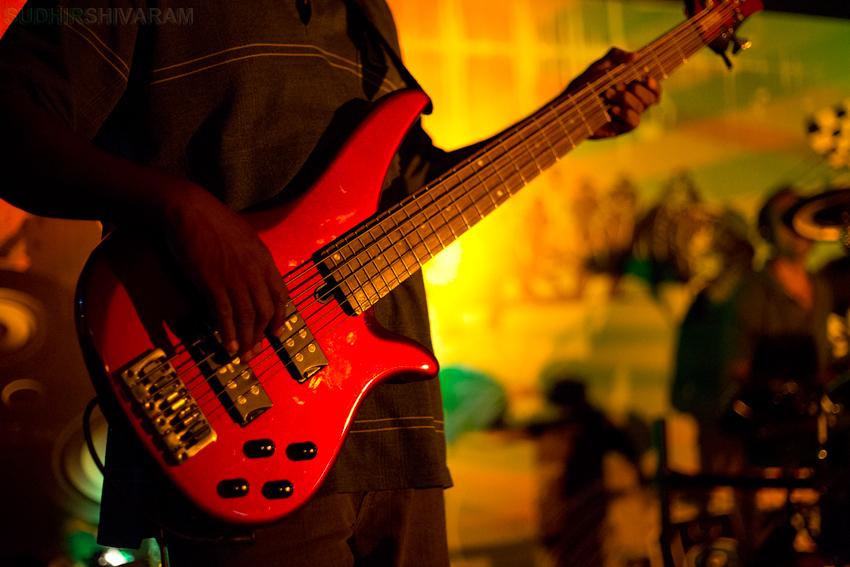
Canon 5D Mark III + Canon 50mm f1.8 II, ISO 6400, f1.8 @ 1/2000, Evaluative Metering at Zero EV. Photo shot at 8:08:46 PM
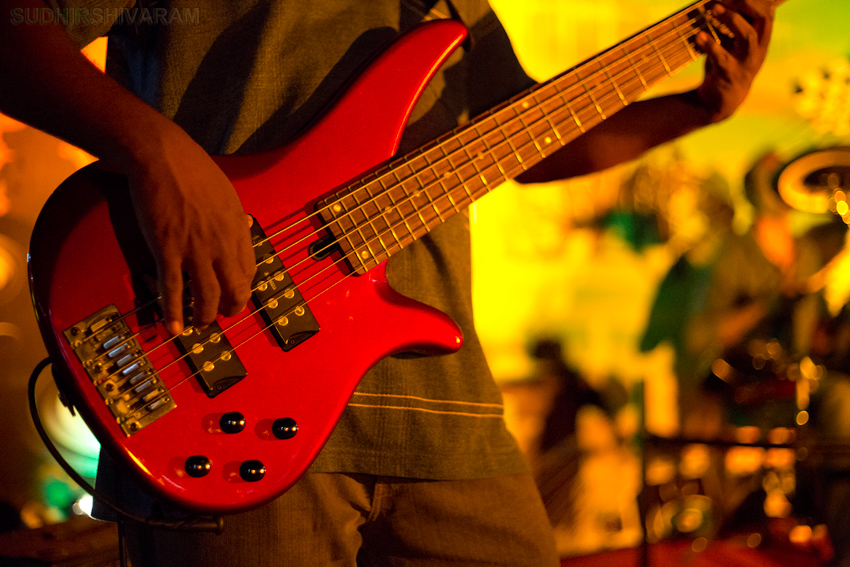
Canon 5D Mark III + Canon 50mm f1.8 II, ISO 8000, f1.8 @ 1/800, Evaluative Metering at Zero EV. Photo shot at 8:09:08 PM

Canon 5D Mark III + Canon 50mm f1.8 II, ISO 10000, f1.8 @ 1/2500, Evaluative Metering at Zero EV. Photo shot at 8:09:17 PM
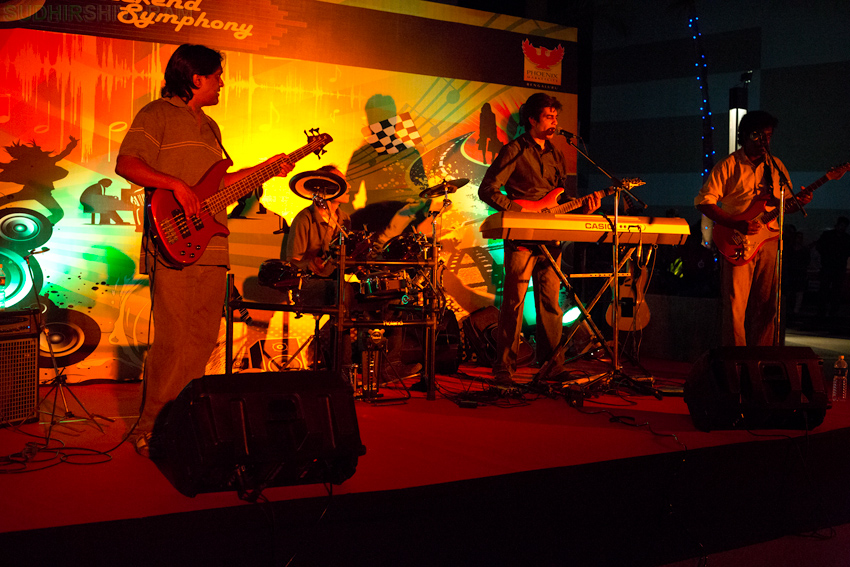
Canon 5D Mark III + Canon 50mm f1.8 II, ISO 10000, f5.6 @ 1/400, Evaluative Metering at Zero EV. Photo shot at 8:06:04 PM
The above series of images should give you a fair idea on how Canon 5D Mark III performs in low light situation at high ISO. Note: all the above images have been shot with the camera default setting and no inbuilt camera noise reduction applied.
Conclusion:
I am pretty impressed with the Canon 5D Mark III as a body to consider for Wildlife Photography. From this perspective, here’s my take on the camera:
Low ISO Performance - Though I have talked about ISO performance, I have to mention that at low ISO, the dynamic range is quite impressive. The details are captured right from -5 to +4EV. So even if you make a mistake in exposure, up to some extent you have the chances of recovering the details in the image.
High ISO Performance - I have said enough on this topic with photographs. It is a well known fact for Wildlife that we need high ISO to get a decent shutter speed to capture the animals in late evening. I was never hesitant to bump up the ISO to 1000 or 2000 as the situation demanded without any sort of concern regarding image quality. My specific observation has been that the colours, details and sharpness are well retained for up to ISO 5000, which is great for wildlife photography. The image is still usable at ISO 6400 and 8000.
Image Quality - I was also using the Canon 1D Mark IV along with the Canon 5D Mark III during this trip. I used the Canon 800mm f5.6L IS lens on the 1D Mark IV body. I had an opportunity to photograph the same subject with both combinations. When I compared the results, I could not see much difference in terms of the tonal range and the colours reproduced. The life-like colours, especially the coat of the Spotted Deer and the Leopard which I photographed, were very pleasing. The out-of-the-box colors were good and stayed so even at higher ISO. The greens in the forest were well reproduced.
AF Point versatility - This was another impressive feature of the Canon 5D Mark III. I configured the joystick to set and move the focusing points around. While looking through the viewfinder and focusing on the animal walking, I could change the focusing point on the fly without taking my eyes off the subject. This helped in better composition and control of the situation while shooting in AI Servo mode.
AF Speed and accuracy - I was very thrilled by the 5D Mark III Auto Focus experience. The focusing points are laid out in a more rectangular, unique format and moving around the focusing points with the joystick is easy and fast. This helps to choose the accurate point of focus just before composition. Combined with the AI Servo technique the AF speed is very fast and can get the moving subject in focus pretty quick. In most of the action shots, the sharpness in each of the frames shot in sequence was quite good. The Langur jumping off the tree and running is one example. The lens used also plays a major factor in achieving this.
Ergonomics - The sleek body compared to the previous 5D Mark II looks good. Better menu options have been provided and direct access to some most-used features. No need to go through the custom functions. This helps in quick and easy access to your most-used settings. The best thing I liked was the ease of use of moving around the focusing points using the joystick while looking at the subject through the view finder. This is pretty cool, especially for wildlife photography where composition is quite challenging.
HD Video and HDR - The HD video capabilities and the new HDR functionality will be tested and published in another article to follow. So watch out for that. That will also include the multiple exposure option.
Since I use the Canon 1D Mark IV, I had some difficulties in using certain image playback and zoom in options. It took me some time to get used to it. But since I was switching between the 1D Mark IV and the 5D Mark III bodies, sometimes I used to get confused. For the short duration I used the camera, I did not come across any major concerns in its operation or usage. Overall, very impressed with its performance and I would definitely recommend it for Wildlife Photography.
Do write to me in case you have any specific queries and I will be more than happy to address them.
Meanwhile, Click here to enjoy some of the images from this trip.
(Images are a combination of Canon 5D Mark III + Canon 400mm f2.8 L IS II and Canon 1D Mark IV + Canon EF 800mm f5.6L IS)
